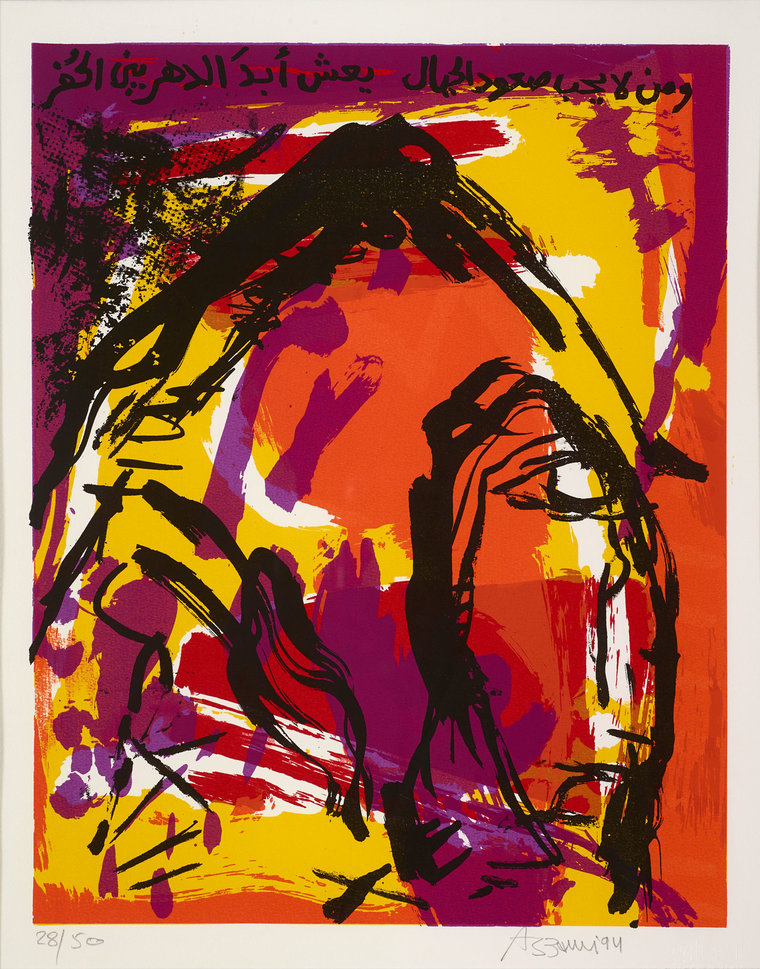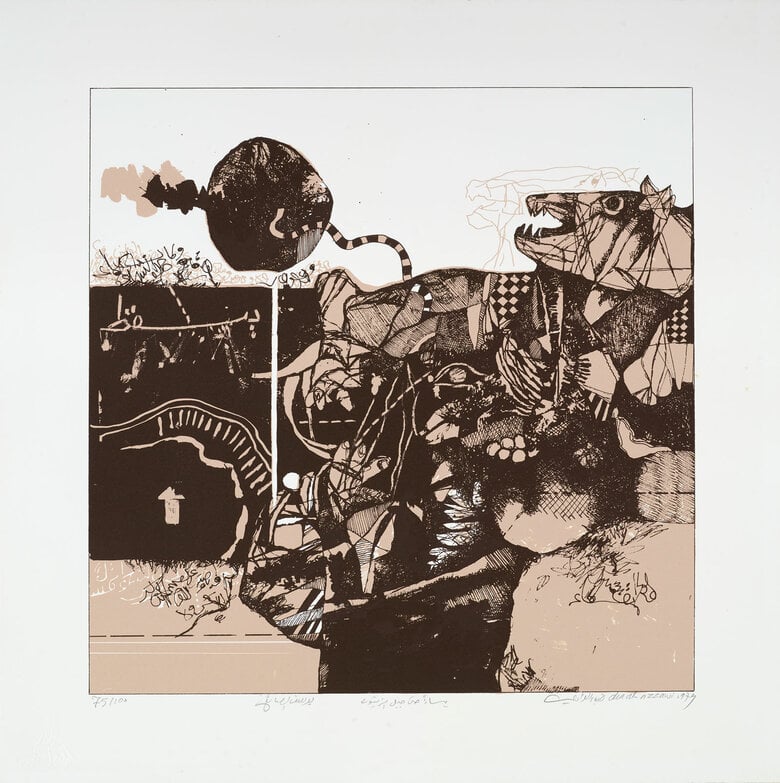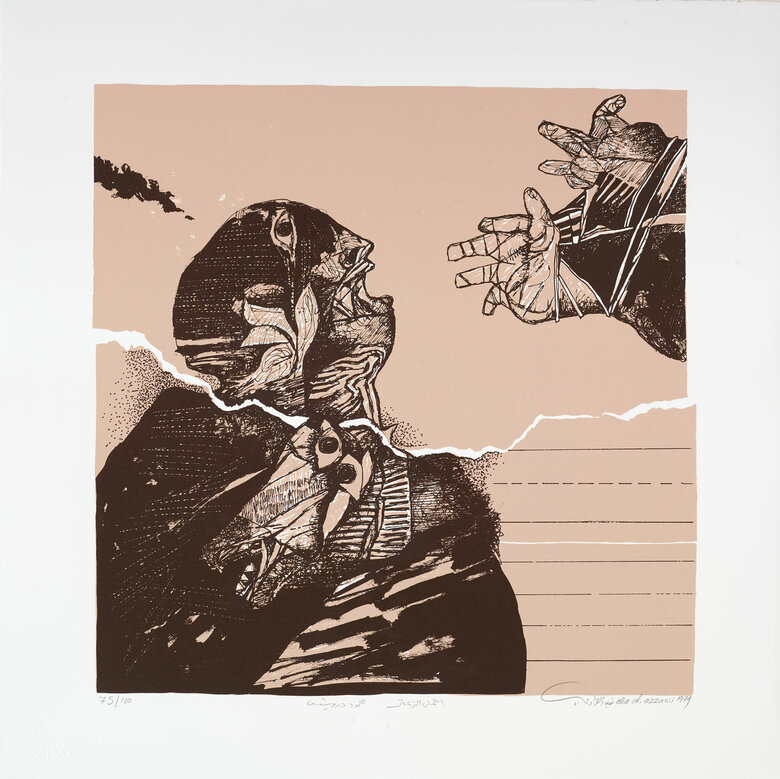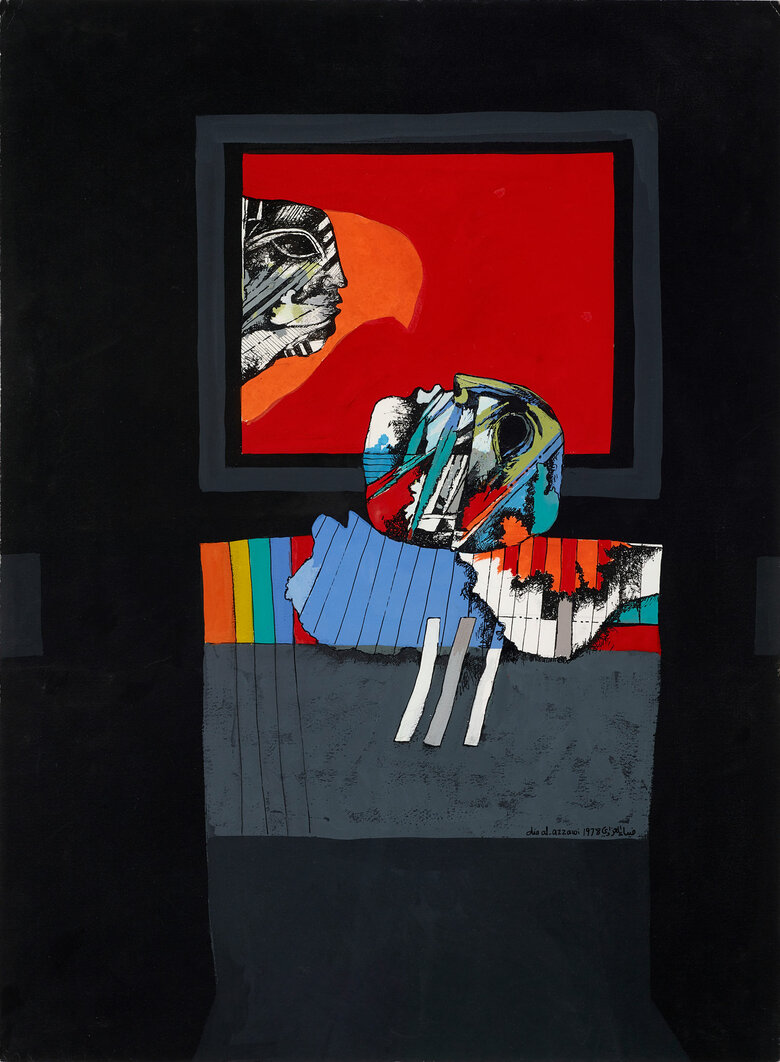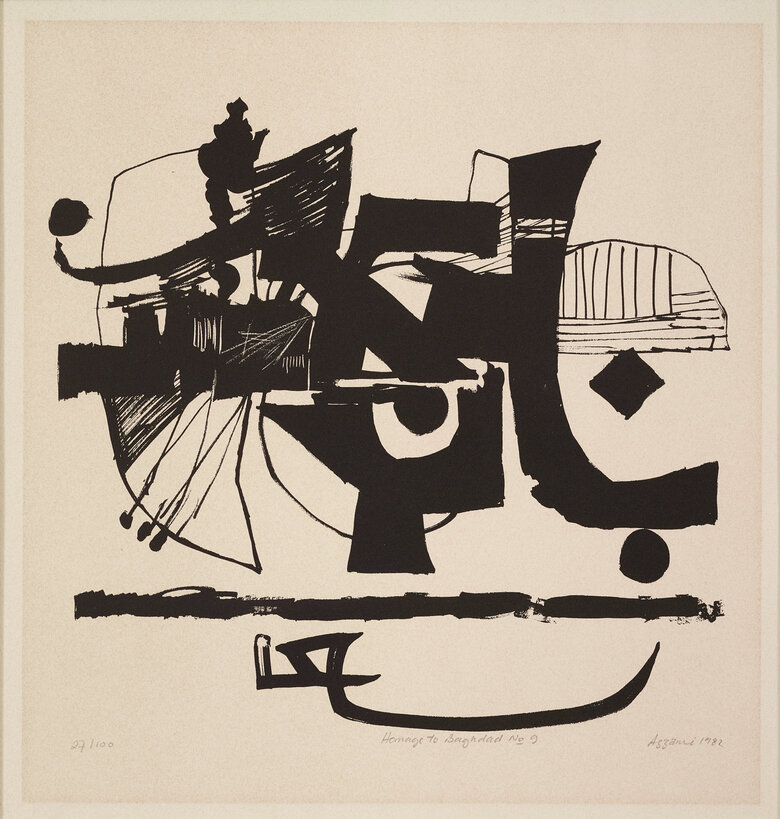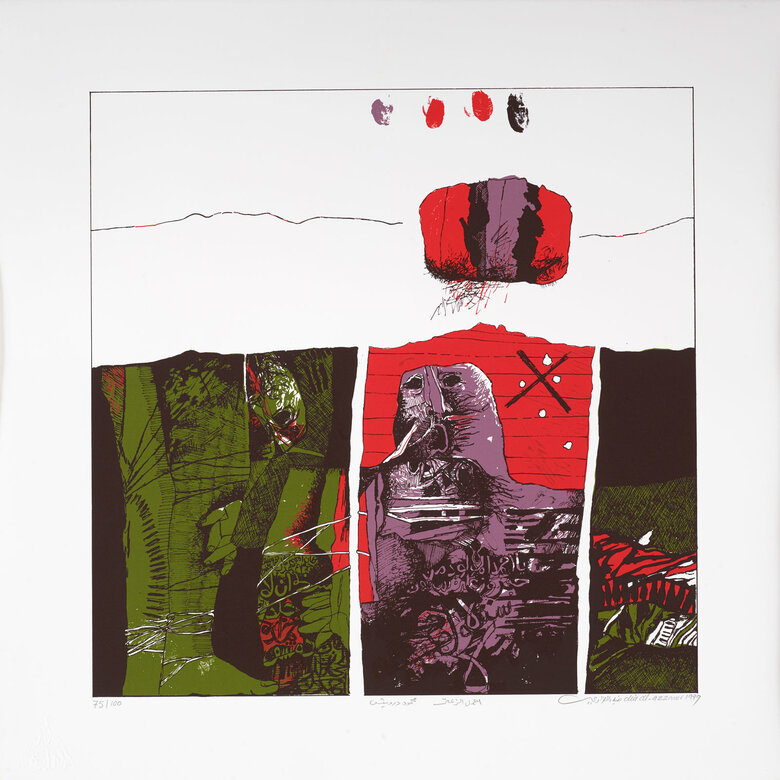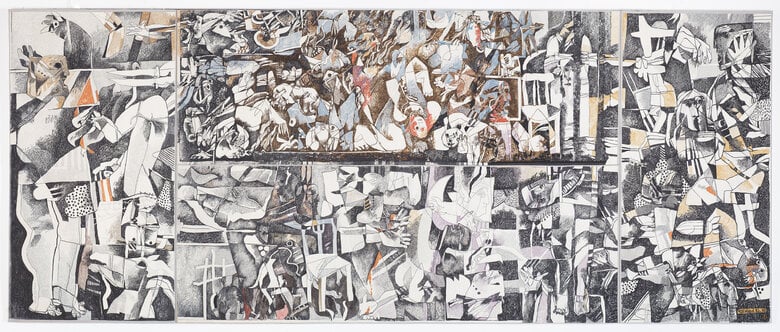The Will of Life, 1994, a series of six silkscreen prints on paper, is a bold exploration of the eponymous poem by Tunisian poet Abu al-Qasim al-Shabbi (1909-1934). The prints are a testament to Al Azzawi’s long connection to the art of printmaking and its relationship to poetry, which emerged from the values of the ‘New Vision Group’ . In 1969, al-Azzawi co-founded Baghdad's 'New Vision Group', known for its unity around radical political and intellectual movements, especially pan-Arab politics. The group was set apart from other groups in Baghdad by its desire to adopt innovative media and methods, including printmaking, graphic arts, and the artist poster, The art of printmaking in its four categories : Intaglio, Reglief, Planography & Screen print, and myriad of processes, is valued, amongst many other reasons, for its accessibility and reproducibility ; a major factor which enhanced its role in transnational decolonial movements, including Arab nationalism. In this series Al-Azzawi adopts Screen printing or Silkscreen technique.
Silkscreen is a traditional post-finishing technique that involves pressing ink through a stenciled mesh onto the surface of a substrate to achieve printed designs. It is also called silkscreen printing or serigraph. This process is widely used in different industries nowadays as it is compatible with different materials, unlimited repetition, and high-level color vibrancy in designs. In addition, screen printing produces a thicker ink print than most printing methods. The six Silkscreen pieces in The Will of Life bring out al-Shabbi’s poetry theme, namely the urgency and inevitability of vibrant life beyond colonial oppression. The work shows several layers of silkscreen prints; each silkscreen is washed with one of the many vibrant inked hues including : orange, yellow, violet,red and green which explore the abundant natural imagery within the poem. As an advocate for freedom, Al Azzawi focuses on verses that call for an existence brimming with life.
أُبَارِكُ في النَّاسِ أَهْلَ الطُّمُوحِ
وَمَنْ يَسْتَلِـذُّ رُكُوبَ الخَطَـر
وأَلْعَنُ مَنْ لا يُمَاشِي الزَّمَـانَ
وَيَقْنَعُ بِالعَيْـشِ عَيْشِ الحَجَر
I bless ambitious and aspiring souls
Holding dear the ones who brave danger,
But condemn those who live, stone-like, behind times
فَلا الأُفْقُ يَحْضُنُ مَيْتَ الطُّيُورِ
وَلا النَّحْلُ يَلْثِمُ مَيْتَ الزَّهَــر
The skies hold no dead birds close to their bosom
Nor do bees sip nectar from lifeless flowers
ظمئت إلى الكون! أين الوجود وأنى أرى العالم المنتظر
I’m thirsty for the universe! Where is existence?
When will I see the anticipated world?
ومن لا يحبُّ صُعودَ الجبالِ
يَعِشْ أبَدَ الدَّهرِ بَيْنَ الحُفَرْ
He who has an aversion to climbing mountains
Will pass his days and nights in ditches and holes
While the vibrant prints and handwritten verses emanate a sense of hope, still, they convey struggle and urge for a new beginning. The overlapping bright colors depicting nature suggest growth and transformation ; they are punctuated by white patches akin to light filtering through a forest canopy. The richness of natural elements suggests that through the connection with nature humans can reconnect with life. The final silkscreen layer, printed with feverish black strokes, reflect some of the imagery in the poem’s verses, such as : a mountain peak, or a man seemingly quenching his thirst. The black brushstrokes swirl into dots,flowers, and grids. Other textures of stippling and sharp lines resemble barbed wire, and prison cells . Also, the work hints at and documents that seal fates, reflecting the poem’s challenge to take on the dark realities yet to be overcome.
signed and dated in English front lower left with edition in English front lower right

